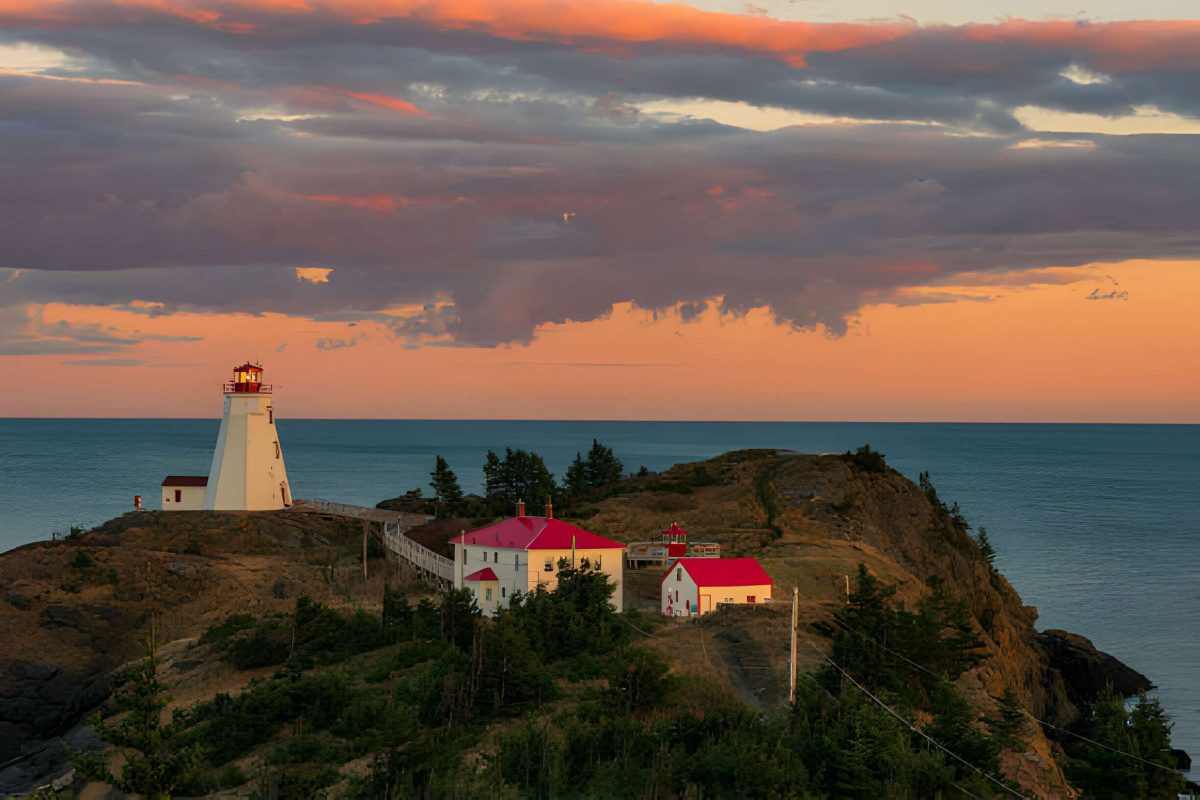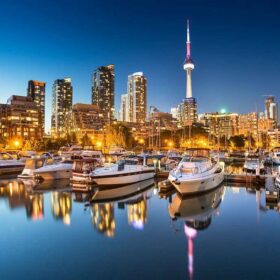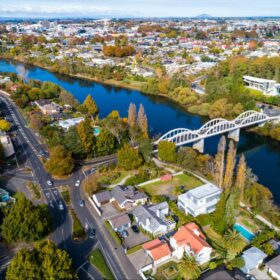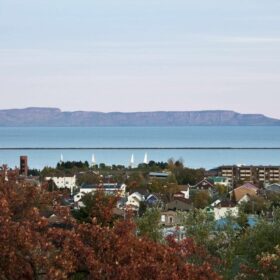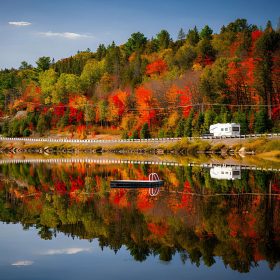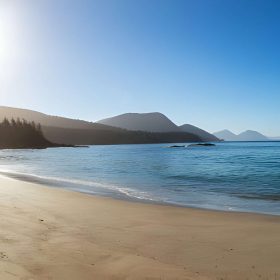The Bay of Fundy, an inlet of the Atlantic Ocean situated between New Brunswick and Nova Scotia in eastern Canada, boasts the highest tides in the world. With a fluctuation as substantial as 19 meters, the waters experience a remarkable rise and fall twice daily. The bay’s funnel-like configuration and considerable length intensify the tidal movements, creating swift currents akin to rushing grindstones along the rugged shoreline. This powerful ebb and flow of water has shaped numerous top tourist attractions in the region, crafting a coastline replete with exciting activities.
Travelers along New Brunswick’s coastline can venture into sea caves during low tide, kayaking around islands that transform into colossal flower-pot-shaped sea stacks just a few hours later a sandy beach. Revealing eons of history, scoured cliffs showcase an abundance of fossils, while rivers and waterfalls occasionally reverse their flow. The ever-shifting water brings an abundance of marine life, making the Bay of Fundy one of the premier destinations globally for whale watching, featuring up to 12 species during the summer.
In addition to these natural wonders, the Fundy shore offers delectable seafood, picturesque lighthouses, dramatic cliffs, islands, sandy beaches, and quaint coastal villages filled with captivating attractions and sights. Museums, galleries, and historic sites further enrich the opportunities for sightseeing.
Explore the best activities during your visit with our compilation of the top tourist attractions on the Bay of Fundy.
1. Hopewell Rocks
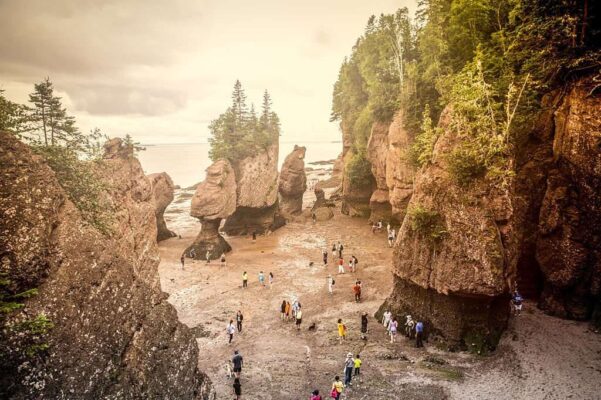
Among the various natural phenomena shaped by the formidable surges of the Fundy tides, the most striking occurs at Hopewell Cape. Here, the sea has carved towering cliffs, leaving behind imposing pillars of more resilient rock standing independently along the shore. During high tide, these pillars resemble tree-covered islands, adorned with the vegetation that once thrived when they were part of the cliffs. At low tide, the pillars stand in solitary grandeur, reaching heights of up to 21 meters above the ocean floor, inviting visitors to stroll amidst them.
Characterized by a terra-cotta hue and narrower bases, the pillars resemble colossal flowerpots filled with trees, earning them the moniker “Flowerpot Rocks.” During high tide, when water envelops everything but the tree-clad summits, observation can be done from a platform. Conversely, at low tide, descending the extensive flights of steps to the ocean floor allows for a close encounter, with park rangers available to answer inquiries about their formation and ongoing erosion. These rocks continue to evolve in shape as erosion persists, attracting families who return annually to compare the rocks with their appearances in past visits.
For an immersive experience at high tide, consider a guided kayak excursion among these rocks with Bay mount Outdoor Adventures.
2. Joggins Fossil Cliffs
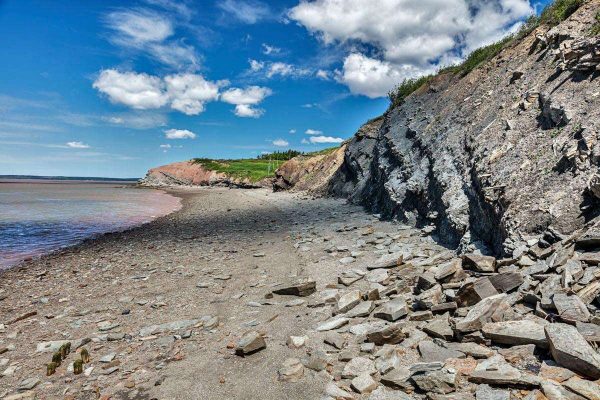
On the western coast of Nova Scotia, the relentless erosion by the Fundy tides over millennia has unveiled 15 kilometers of coastal cliffs. These cliffs boast layers of rock that provide the world’s most comprehensive fossil record, offering a glimpse into life on Earth 300 million years ago during the Coal Age. In this era, Joggins and the surrounding region were covered by lush forests and tropical vegetation, resulting in vast amounts of organic matter that, over millions of years, formed the coal deposits that characterize this period.
At the Joggins Fossil Cliffs UNESCO World Heritage Site, visitors can stroll along the shore during low tide to witness remarkable sandstone layers containing the ancestors of the first dinosaurs. The ongoing tidal action continuously reveals more fossils, with fragments breaking away and becoming visible on the beach. These rock layers serve as a repository of plants and animal life from that era, shedding light on the initial transition of animals from water to land—an evolutionary milestone crucial for understanding the origins of terrestrial vertebrate life.
Overlooking the cliffs, the Joggins Fossil Centre occupies the site of a former coal mine and showcases an extensive collection of fossils. The center features exhibits that illustrate this geological history and highlight the significant scientific discoveries made in this area.
3. Reversing Falls, Skywalk, and Stonehammer Geopark
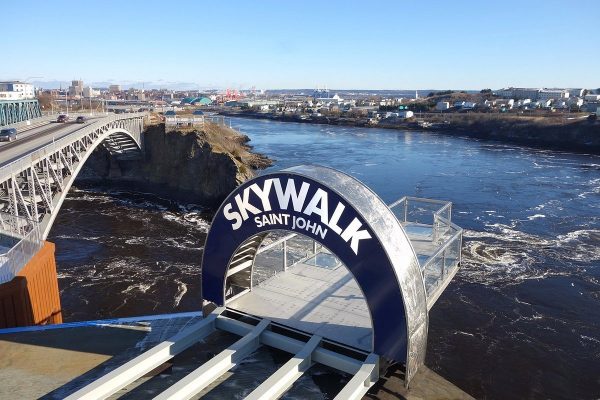
One of the prime locations to witness the impressive impact of the Bay of Fundy tides is the narrow gorge at the head of the harbor in Saint John. The incoming tide surges over a rocky ridge, creating a unique phenomenon—a waterfall that defies the usual downstream flow. The significant eight-meter tidal fluctuation between high and low tide causes the Saint John River to reverse its course at this point, generating a turbulent display of whirlpools where it clashes with the river’s natural current. When the tide recedes twelve hours later, the river resumes its regular flow, and the falls cascade over the stone ridge in the opposite direction.
For an up-close view of the falls, you can peer directly down from the end of the Reversing Falls Bridge, which spans above the narrowest part of the gorge, or from the nearby Skywalk Saint John. This observation deck extends more than eight meters from the cliff, featuring glass floor panels that offer a transparent perspective of the falls and the swirling whirlpools 30 meters below. Interactive displays provide insights into the tidal dynamics and the geological features of the enclosing cliffs.
The dynamic rush of water is also observable from Fallsview Park, located nearby, where Stonehammer Geopark—the sole UNESCO-listed global geopark in North America—features information panels on the tides and the geological composition of the cliffs. For a more immersive experience of the tide’s power, consider a boat ride into the gorge or a thrilling zipline adventure high above the cascading waters.
4. Grand Manan Island
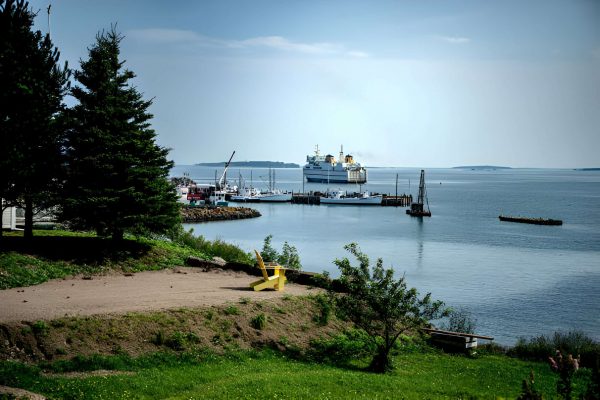
Located at the southwestern entrance of the Bay of Fundy, Grand Manan Island is accessible by ferry from Blacks Harbour, near the US/Canada international border. Interestingly, Grand Manan is closer to Maine than it is to mainland Canada. The island’s eastern shore features small fishing communities connected by a single road stretching along its 35-kilometer length, while a few lanes lead across the island to its steep western shore.
Nature enthusiasts flock to Grand Manan for whale-watching tours and the opportunity to observe over 240 bird species, including the iconic Atlantic puffin. So confident are tour operators, like Sea Watch Tours, in the presence of whales in the waters off Grand Manan that trips are complimentary if sightings are not guaranteed.
The northwestern end of the island, near Dark Harbour, attracts rockhounds in search of semi-precious stones such as amethysts, jasper, and agate, remnants of the island’s volcanic history. Additionally, the island draws artists, writers, and other creative individuals seeking tranquility and inspiration from its natural surroundings, with their works showcased in some of the island’s understated galleries.
5. Whale Watching
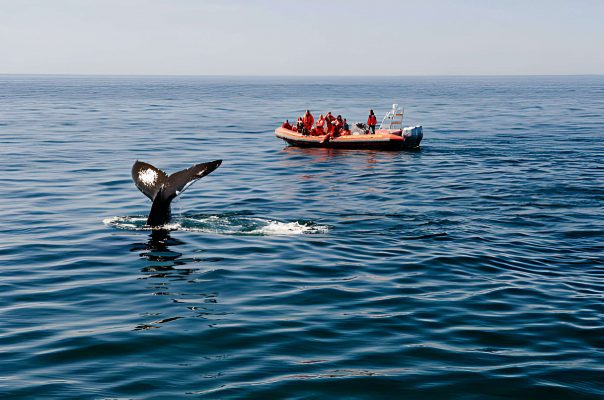
One of the premier destinations for whale watching globally, the Bay of Fundy welcomes up to 12 species of whales and various marine creatures during the summer months. The abundant supply of krill and fish brought in by the powerful tides makes the bay an optimal environment for feeding and serving as a nursery. Large schools of herring and mackerel support the dietary needs of whales, dolphins, seabirds, and seals.
The initial visitors in the spring include minke and finback whales, alongside harbor porpoises, followed by humpback whales and white-sided dolphins arriving in June. As summer progresses, additional species, including the rare North Atlantic Right Whale, as well as occasional sperm and blue whales, join the marine spectacle.
Running through October, with peak sightings in August, the season offers excellent chances to witness not just one whale but many, along with other marine life. En route, you will pass by lighthouses and islands that serve as nesting grounds for seabirds.
The top two locations for whale-watching cruises are St. Andrews in New Brunswick and Brier Island, near the Annapolis Valley in Nova Scotia. In St. Andrews, you can select from three unique experiences: Island Quest Marine Whale and Wildlife Cruises, guided by certified marine naturalists; Fundy Tide Runners, combining whale watching with the excitement of skimming across the sea by Zodiac; and Jolly Breeze Tall Ship, a fully rigged sailing ship with onboard activities, particularly popular for families with young children.
The waters off Brier Island are crucial feeding grounds for whales, dolphins, porpoises, seals, and various seabirds. Mariner Cruises, departing from Westport on Brier Island, offers whale watching and birding tours narrated by local naturalists. Brier Island is renowned for its diverse shore and seabirds, attracting hundreds of migrating warblers, shorebirds, and raptors in the fall.
6. Riding the Shubenacadie River Tidal Bore
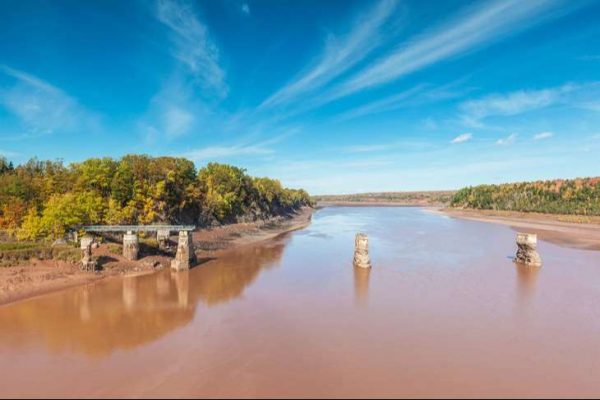
Experience the awe-inspiring power of the mighty Fundy tides as they surge into the Shubenacadie River, located north of Halifax in central Nova Scotia. The intense force of the tidal flow compels its entry into the rivers that feed into the Cobequid Basin, an elongated arm of the Bay of Fundy extending eastward into the heart of Nova Scotia, causing their direction to reverse twice daily.
In a particularly dramatic display, a single, swiftly moving wave—a formidable wall of water—roars upstream along the Shubenacadie River. You can embark on this exhilarating adventure with Shubenacadie River Adventure Tours or River Runners Tidal Bore Rafting for an unforgettable experience.
For an informative perspective on this phenomenon, visit the Fundy Tidal Interpretive Centre, where you can delve into the details of how a tidal bore forms as muddy water surges upriver. In various locations along the Minas and Cobequid basins, you can stroll on the ocean floor during low tide, an area submerged under several meters of seawater just six hours earlier. Cape Blomidon, a promontory extending into the Minas Basin at its narrowest point, offers a prime vantage point to observe the tides at work.
7. The Fundy Trail Parkway and St. Martins
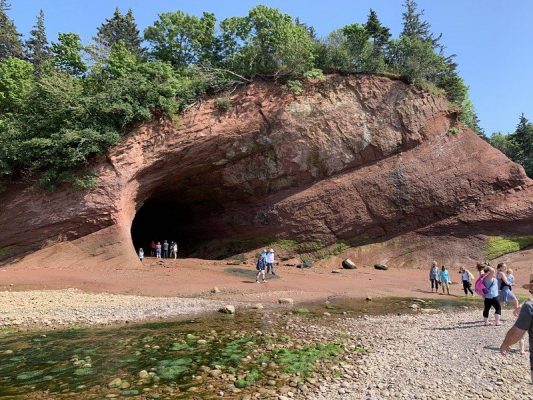
The historic shipbuilding town of St. Martins serves as the entrance to the Fundy Trail Parkway, a picturesque coastal route situated high above the coastline. The parkway features cliff-top lookout points, hiking trails, picnic areas, and cove beaches. Spanning the Big Salmon River is an 84-meter suspension footbridge, located at the site of a former logging community. Though little remains today, an interpretive center showcases artifacts, and the Heritage Sawmill displays old lumbering equipment.
The Fundy Trail Parkway extends across the river, ascending the steep headland, traversing cliff tops, and descending to a lengthy beach. Scenic viewpoints with parking areas are strategically placed, and a weekend shuttle bus facilitates the return of walkers to their vehicles.
St. Martins is a worthwhile stop, boasting twin covered bridges, a former lighthouse serving as a visitor information center, and red sandstone cliffs sculpted into massive sea caves by the Fundy tides. Exploration of these caves is possible from the beach during low tide. As you observe the tiny harbor, take note of the boats’ positions at the wharves. Upon your return from the parkway, you’ll witness the significant contrast in the tide levels—when the tide is out, the fishing boats rest in the mud of the ocean floor.
8. Fundy National Park
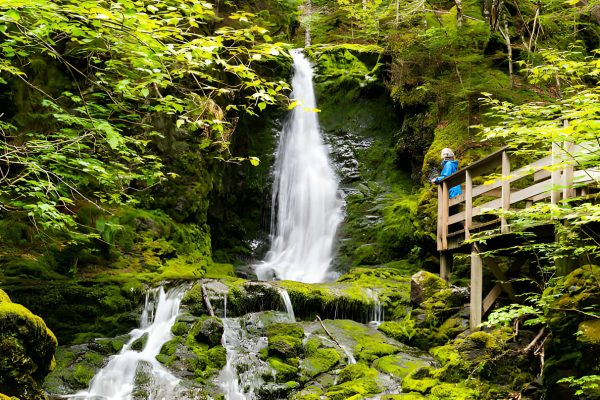
Nestled between the cities of Moncton and Saint John, Bay of Fundy National Park safeguards an unspoiled stretch of New Brunswick coastline. The predominantly forested area caters to year-round recreation, featuring campgrounds, hiking trails meandering through the woods, coastal viewpoints, an outdoor swimming pool, boating opportunities, and a golf course.
During the fall, bird enthusiasts flock to the park to witness migratory species feeding in the nutrient-rich mudflats shaped by the tides. In the winter, 40 kilometers of the park’s trails are meticulously groomed for cross-country skiing.
The village of Alma, situated within the park boundaries, serves as a convenient hub for accommodations, dining, and exploring the coastline from a unique vantage point. Fresh Air Adventures offers kayak tours departing from Alma.
Adding to the allure of the area, three of New Brunswick’s most stunning waterfalls—Dickson Falls, Laverty Falls, and the tallest of them all, Third Vault Falls at 16 meters—are located near Alma.
9. Cape Enrage
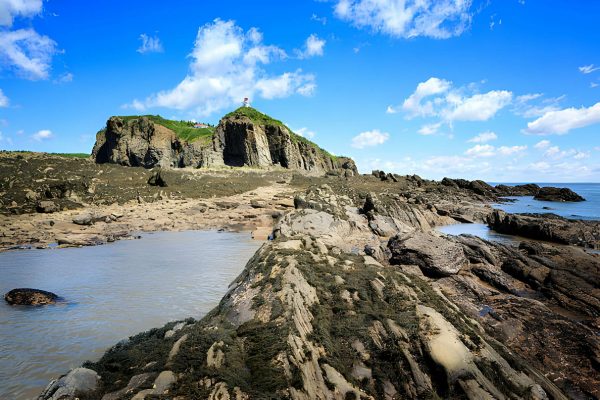
Stretching prominently into the Bay of Fundy from the New Brunswick shoreline, Cape Enrage boasts towering, rugged cliffs that command a view of a vast and perilous reef, contributing to tumultuous seas. To address the numerous shipwrecks in the area, a lighthouse was constructed in 1839 and continues to operate today.
In addition to hosting the charming Cape House Restaurant and the Gallery at the Cape, the lighthouse serves as an outdoor activity center offering a plethora of recreational opportunities, including rock climbing, rappelling, kayaking, and a 600-foot zipline.
Observation platforms provide panoramic views of the towering cliffs, while below lies a beach adorned with fossils from the towering cliffs, exposing layers of sedimentary rock dating back 320 million years. Due to tidal conditions and the risk of falling rocks, this area is hazardous and should only be explored with a guide from the center or under their guidance.
10. St. Andrews-by-the-Sea

Situated so close to the Canadian/US border that the Maine shore is visible from its charming town center, St. Andrews (rarely referred to by its longer name) has served as a vacation haven for over a century, evident from the grand summer residences gracing the hilltop above the harbor.
One of these estates has transformed into Kingsbrae Garden, a leading horticultural attraction in Canada. Its themed gardens and floral arrangements showcase over 50,000 perennials thriving in the climate moderated by the Bay of Fundy. Another estate, the 50-room summer residence of railway magnate Sir William Van Horne, now stands as Ministers Island Historic Site.
Amidst the shopping, dining, art galleries, and whale-watching opportunities, St. Andrews offers family-friendly activities, including the children’s garden at Kingsbrae, a replica of a War of 1812 blockhouse, and the Huntsman Marine Science Center. Here, you and your children can delve into the wonders of the Bay of Fundy through interactive exhibits and aquariums, with special “backstage” tours allowing kids to meet and even feed some sea animals not typically visible in public displays.
11. Petitcodiac River and Moncton Tidal Bore

As the tides surge through the Bay of Fundy twice daily, the swiftly rising and falling seawater generate expansive tidal mudflats, stretching far inland along rivers flooded by these daily sea incursions. This phenomenon dramatically affects rivers like the Petitcodiac River in Moncton, leaving its channels nearly empty during certain tidal conditions.
At low tide, the Petitcodiac transforms into a vast expanse of rich brown mud, resembling a deeply carved bed of chocolate and earning it the moniker “Chocolate River.” In winter, when the surface freezes, the mud takes on the appearance of layered chocolate cake with frosting.
The incoming tide arrives with such abrupt force that it forms a meter-high wall of water, transforming the narrow muddy riverbed into a 7.5-meter-deep river within an hour. The swelling waters extend over nearby mudflats and salt marshes. Tidal Bore Park in downtown Moncton provides the optimal vantage point to witness this natural spectacle, with a large clock indicating the timing of the next bore. Punctuality is key—it’s a fleeting event.
Accommodation: Where to Stay near Bay of Fundy: Best Areas & Hotels
FAQs
Q: What makes the Bay of Fundy’s tides unique?
A: The Bay of Fundy boasts the highest tides globally, reaching up to 53 feet. This phenomenon is a result of the bay’s unique shape and underwater geography.
Q: Are there any restrictions on whale watching to protect marine life?
A: Yes, there are strict regulations in place to ensure responsible whale watching. Operators adhere to guidelines to minimize disturbance to these magnificent creatures.
Q: What is the best time to visit the Bay for hiking enthusiasts?
A: The summer and early fall months offer ideal hiking conditions with mild temperatures and clear skies. Spring is also a great time to witness blooming landscapes.
Q: How can I contribute to the Bay’s conservation efforts?
A: Visitors can support conservation by respecting local wildlife, following designated trails, and participating in organized clean-up events. Additionally, staying informed about environmental initiatives makes a positive impact.
Q: Are there family-friendly events in the Bay of Fundy?
A: Absolutely! The Bay hosts family-friendly events throughout the year, including festivals, parades, and interactive museum exhibits suitable for visitors of all ages.

